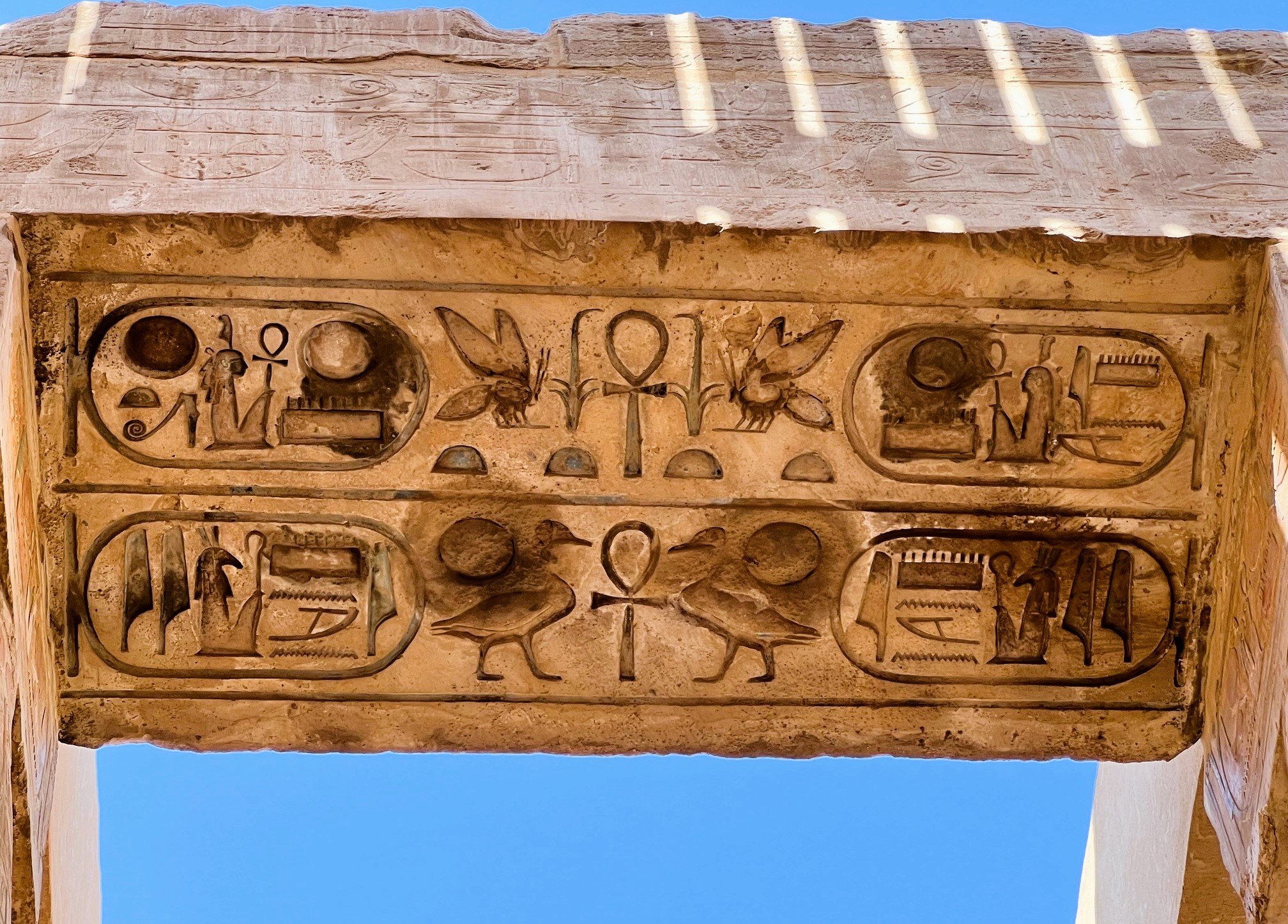Jonathan C. Lewis
Author and Artist
Temples and Tombs
A fictional travelogue; four minutes to read.
My stomach is fluttery. The childlike wonder of learning, of having a new experience. I last felt this way thirty-eight years ago. I was ten and giddy about going to Disneyland.
It’s early morning when my tour bus turns into the parking lot at Karnak Temple. The sun has been awake for hours, blistering the pavement, the dirt, the rocks, the UNESCO archaeological ruins and—as soon as I step outside—me. Like a potato baking in an oven, I am browning.
Karnak, the largest religious complex in Egypt, is two hundred acres of columns, hieroglyphics, obelisks, sphinxes. Massive stone roof blocks are supported by 134 massive columns towering as high as 80 feet. I roam under the chiseled joists, into cracked rooms with painted walls, through outdoor plazas lined with statuary, along monumental avenues. It’s no wonder it took thirty different Egyptian dynasties to complete the building of it
Nothing I imagined is as impressive as what I am seeing, smelling, sensing. I am silenced by the sheer grandeur of the place.
Another reason for silence: Karnak is a grave, a tombstone marking the death of a once magnificent nation. The temples, tombs, pyramids, stone sarcophagi, mummies and funereal urns in Egypt ensnare me with magic and mystery, with the story of a civilization collapsing, with the inescapable truth that death is coming.
The place is crowded. People mill about or follow guides holding placards saying Memphis Tours, Bible Seniors or, simply, the Green Group. Among the hordes of picture-snapping tourists, no one knows where the dead go—but everyone knows we are dying.
I am already walking in the dead dust of myself. As the sophomores at my high school learn in their health ed classes, my outer skin layer is as cadaverous as King Tut. During my time touring Karnak, five million dead flakes from my lifeless skin will fall to the ground. Forever after, I will be joined with the bones, the bodies, the memories of men and women who ruled this land with dictatorial authority backed up by religious superstition.
Karnak’s uneven, chiseled stone walkways punish the soles of my feet. The heat takes its toll. I’m thirsty. I need a shower. The Karnak air is dead. Inside these ancient ruins, my body burns for a cooling breeze—for any breeze at all.
Humans have been living and dying along the Nile for 8,000 years. Against this overflow of history, my American history classes cover scarcely 400 years. Hardly enough time for Americans to create, construct and then crumble a great civilization.
My students seem to sense America’s smallness; in class they pass notes, doodle in their books, mentally make weekend plans. Karnak is farther from my high school than London, Moscow or my favorite hot dog stand in Santiago, Chile, but the deadening sound of my students not paying attention haunts me. I’m not the absolute ruler—or the inspirational one—who commands their academic allegiance.
Like an Egyptian pharaoh failing his minions, I’m waiting for the afterlife—for my after-classroom retirement. I’m twitchy, sweaty. Ready to move on to the next journey, to the next Karnak.








